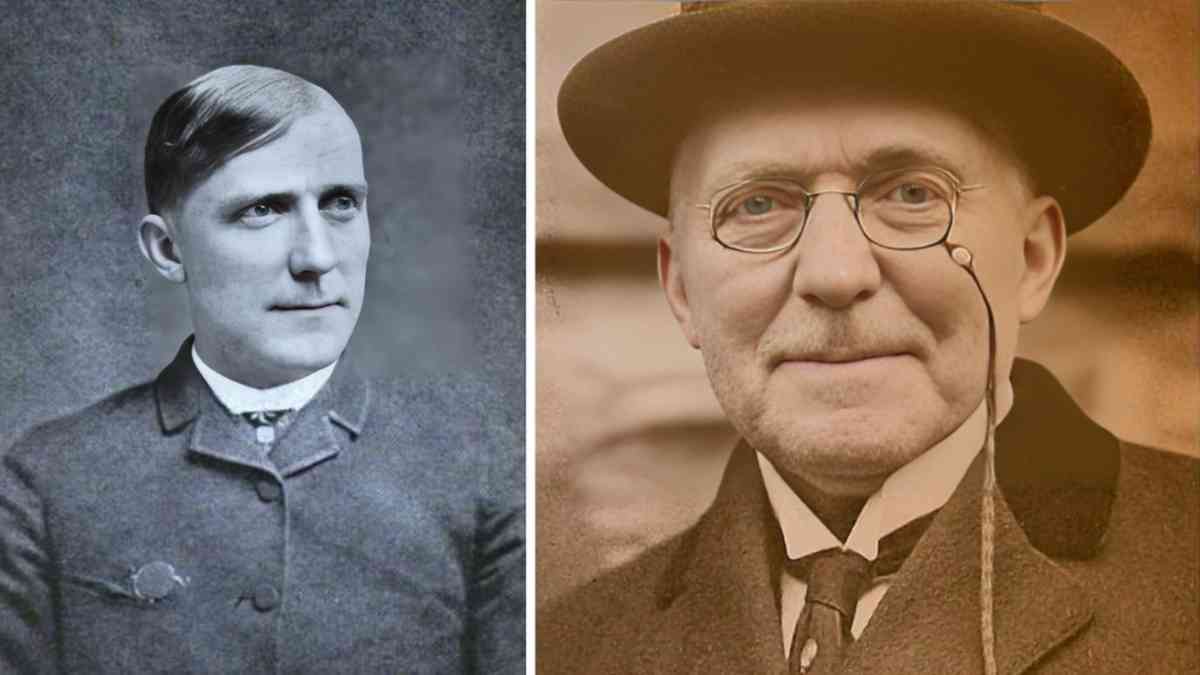James Whitcomb Riley: The Hoosier Poet Who Captured America’s Heart

James Whitcomb Riley, widely known as the “Hoosier Poet,” was a beloved American writer whose vivid storytelling and use of Midwestern dialect brought rural life to poetic brilliance. Best known for iconic works like “Little Orphant Annie” and “The Raggedy Man,” Riley became a national treasure in the late 19th and early 20th centuries, captivating both children and adults with heartfelt, humorous, and morally resonant verses.
Early Life and Humble Beginnings
James Whitcomb Riley was born on October 7, 1849, in Greenfield, Indiana. His childhood was steeped in the rich oral traditions of the Midwest. Raised in a household that valued storytelling, Riley absorbed tales of folklore, humor, and hardship from family members and neighbors. His father, Reuben Riley, was a Civil War veteran and lawyer, and his mother, Elizabeth Riley, nurtured James’s creative side with her love for poetry and song.
The vibrant and colorful small-town atmosphere influenced his ability to capture dialects and details, becoming the foundation of his poetic voice.
The Birth of a Literary Voice
Riley’s journey into the literary world was anything but direct. As a young man, he worked various odd jobs, including sign painting and writing for newspapers. His earliest literary experiments were often done under pseudonyms.
One of his earliest claims to fame was a hoax poem mimicking Edgar Allan Poe, which showcased Riley’s command of form and imagination, even though it stirred controversy.
Signature Works and National Fame
Riley’s fame accelerated in the 1880s. In 1885, he released “The Old Swimmin’ Hole and ‘Leven More Poems,” a best-selling collection that made him a household name.
His breakout poem, “Little Orphant Annie,” published in 1885, was inspired by Mary Alice “Allie” Smith, an orphan girl taken in by the Riley family. Originally titled “The Elf Child,” a printing error changed its title—and American literary history.
Another masterpiece, “The Raggedy Man,” was based on a German tramp who worked for Riley’s family. This poem influenced the creation of the iconic Raggedy Ann doll.
Style, Themes, and Influence
Riley’s poetry was accessible, emotional, and full of rural charm. He often wrote in Midwestern dialect, bringing the speech and experiences of everyday people into the spotlight.
His themes included childhood innocence, nostalgia, nature, and moral reflection. Riley had a unique gift: transforming simple stories into heartfelt verse that resonated across generations.
Unlike contemporaries focused on grandiose subjects or societal critiques, Riley’s genius lay in elevating the ordinary and speaking directly to common hearts.
The People’s Poet
Riley earned the nickname “The Children’s Poet” due to his immense popularity among young readers. His public appearances were theatrical and deeply engaging, drawing massive crowds across the nation.
He was one of the first poets to gain celebrity status in America, performing before U.S. Presidents and elite audiences. His readings weren’t just literary events—they were performances that connected deeply with the public.
Beyond poetry, Riley supported rising writers. He notably assisted Paul Laurence Dunbar, an African American poet, helping him gain national attention at a time of rampant racial discrimination.
Legacy and Lasting Impact
James Whitcomb Riley passed away on July 22, 1916. His death triggered a national wave of mourning. Over 35,000 people came to honor him at the Indiana State Capitol—an unprecedented tribute for a writer.
His enduring legacy includes:
- Riley Children’s Foundation, supporting Riley Hospital for Children in Indianapolis.
- James Whitcomb Riley Museum Home in Greenfield, Indiana, preserving his childhood memories.
- The annual Riley Festival, celebrating literature and local culture in his hometown.
Riley’s work is still studied in classrooms and cherished by poetry lovers for its warmth, relatability, and charm.
Critical Reception and Modern Perspective
Despite his popularity, Riley’s work has seen mixed critical reception over time. Some literary critics argue that his sentimental tone and dialect use limit his literary depth.
However, many scholars defend his contributions, emphasizing his unparalleled connection with the American public and his role in preserving regional speech and culture.
Riley’s poems serve not only as artistic expressions but also as historical snapshots—capturing the essence of Midwestern life in the 19th century.
Interesting Facts About James Whitcomb Riley
- He was named after Indiana politician James Whitcomb.
- Riley never married, choosing instead to devote his life to poetry.
- His poem “Little Orphant Annie” inspired the comic strip and Broadway musical “Little Orphan Annie.”
- He received honorary degrees from Yale and the University of Pennsylvania.
- Riley was featured on a U.S. postage stamp in 1940 as part of the Famous Americans series.
Conclusion
James Whitcomb Riley remains a pillar of American literary heritage. He carved out a niche where poetry met the people—simple, beautiful, and profound.
His ability to capture the spirit of rural America in verse made him more than just a poet—he became a cultural ambassador of the Midwest.
Whether you’re a literary scholar or a curious reader, delving into Riley’s work offers a heartfelt experience—one that honors tradition, celebrates simplicity, and speaks to the soul.
Riley’s poetry will always be remembered for its ability to connect generations with the voice of America’s heartland.



